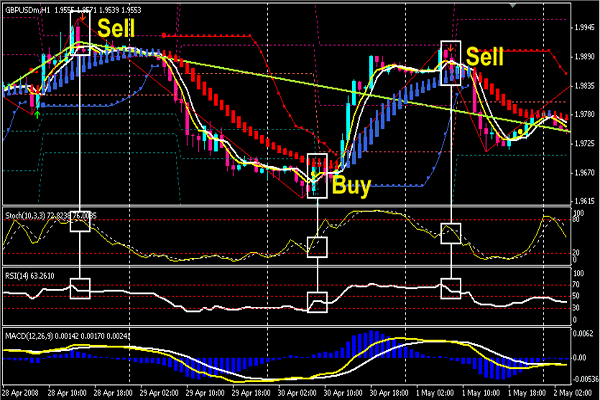Introduction
Navigating the turbulent waters of the forex market demands astute analysis and strategic decision-making. Recognizing market trends is paramount to leveraging price movements effectively. Forex trend indicators provide invaluable insights, empowering traders to align their positions with prevailing market momentum, thereby maximizing profit potential.

Image: www.forexsignals.com
Understanding Forex Trend Indicators
Forex trend indicators are technical analysis tools designed to measure the direction and strength of a currency pair’s price movement. By analyzing historical price data, these indicators discern underlying patterns and help traders assess market conditions. Trend indicators play a crucial role in identifying potential trading opportunities, setting profit targets, and managing risk exposure.
Types of Forex Trend Indicators
The forex market offers a diverse array of trend indicators, each with unique characteristics and advantages. Some of the most popular and effective trend indicators include:
-
Moving Averages (MA): MAs smooth out price fluctuations by calculating the average price of a currency pair over a specified period. Traders can identify trends by observing the slope and direction of the moving average line.
-
Bollinger Bands: Bollinger Bands consist of three lines: a middle line (the MA), an upper band, and a lower band. The Bollinger Band width can help traders identify periods of high and low volatility, providing insights into potential trend reversals.
-
Parabolic SAR: The Parabolic SAR (Stop and Reverse) is a trend-following indicator that plots a series of dots above or below price. Traders use Parabolic SAR to identify trend reversals and potential entry and exit points.
-
Relative Strength Index (RSI): RSI measures the strength of a currency pair’s price momentum. It oscillates between 0 and 100, with values above 70 indicating overbought conditions and values below 30 signaling oversold conditions.
-
Stochastic Oscillator: The Stochastic Oscillator compares a currency pair’s closing price to its price range over a specified period. It ranges between 0 and 100, with values above 80 indicating overbought conditions and values below 20 indicating oversold conditions.
Identifying Trends with Trend Indicators
When using trend indicators, traders must carefully consider the time frame of the analysis. Different time frames reveal trends of varying significance. For instance, a trend on a daily chart may not be apparent on an hourly chart. It’s also essential to utilize multiple trend indicators to confirm trends, as relying on a single indicator can lead to false signals.

Image: www.pinterest.com
Trading Strategies Using Trend Indicators
Trend indicators provide a solid foundation for developing robust trading strategies. Here are a few examples:
-
Trend-Following Strategy: Traders can align their positions with prevailing market momentum by entering trades in the direction of the trend, using trend indicators to determine entry and exit points.
-
Mean Reversion Strategy: This strategy exploits price deviations from the moving average. Traders buy when prices dip below the MA and sell when prices rise above it, anticipating a return to the average price.
-
Swing Trading Strategy: Swing traders aim to capture profits from short-term price swings within a larger trend. Trend indicators help traders identify potential pullbacks and trend continuations.
Mastering Trend Indicators
Mastering the art of forex trend indicators requires practice and a deep understanding of their strengths and limitations. Traders should explore different indicators, experiment with various time frames, and learn to interpret their signals effectively. Consistent application and a disciplined trading plan will enhance trading precision and optimize profit potential.
How To Find Forex Treand Indicator
Conclusion
Forex trend indicators are indispensable tools for navigating market dynamics and making informed trading decisions. By comprehending the various indicators available, understanding how to identify trends, and integrating trend indicators into trading strategies, traders can equip themselves with a competitive edge in the ever-evolving forex market. The ability to discern market trends empowers traders to align their positions with prevailing market momentum, capturing lucrative trading opportunities while minimizing risk exposure.






